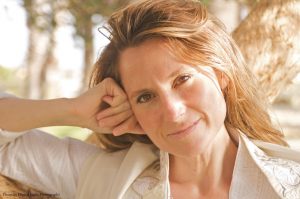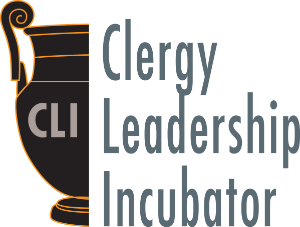How Radical Ritual Empowers a New Spiritual Community-Part 2
Rabbi Sid’s Editor’s Note: The DNA of CLI is transformational change, both of the American rabbinate and, more importantly, of the kinds of spiritual communities that can engage the passion and interests of 21st century Jews. Rabbi Lori is a graduate of CLI’s inaugural cohort. The Open Temple was incubated when Rabbi Lori was a CLI Fellow. Her creative re-imagining of all things Jewish should be an inspiration to others. This article, which we will publish in 5 installments in successive months, is the longest we’ve ever published. The article also sets the stage for CLI’s co-sponsorship of the Kol Tefillah Conference, scheduled to take place January 19-21, 2024 at Temple Beth Am in Los Angeles.

As we enter the metaphorical gates of Rosh HaShanah and Yom Kippur, we need to remember that, for some in our presence, the sights and sounds are more nostalgia than knowledge, and for many, this will be the first time entering into this experience at all. The first time I entered a synagogue on the High Holidays, I was directed up a flight of stairs to the women’s section and handed a prayerbook. Looking at the men below, already deeply involved in devotional ritual, I turned to the women sitting around me, outside of the ritual space, their faces in a book or talking to one another. I opened the prayerbook in my hand (upside down and backwards), feeling the peach-fuzz pages soft on my fingers, sending a sensation like an electrocution into my brain.
Tears pooled in my eyes as the Hebrew blurred on the page – “all of this will never be open to me,” I thought. I choked on the shame, neglect and exile I felt to ever possibly being able to go on my ancestral, spiritual path. There were just too many barriers of entry. Seeking a source of comfort, I turned to the English on the other side of the page. Reading the text, my cheeks burned, and anger rose from my soul, as the language was filled with images of a patriarchal and anthropomorphic God that I could not relate to. Judaism seemed all but impenetrable to me.
I stayed for about an hour and had enough. Walking down the stairs and back onto the street, I walked and walked, puzzled and bereft. And yet, a seed had been planted. Something imprinted my soul on that fall day of my 22nd year. Thirty years later, my rabbinate is dedicated to cracking open the geode of our tradition to reveal the jewels within so its light can illuminate the way for others. Open Temple’s High Holiday Ritual Lab was created to help others feel a palpable sense of returning to something that was always inside of them.
The Six Senses
The High Holidays are a smell. Each year as we awaken to the call of the observance, there is a distinct smell in the air; of the turning from summer to fall; something of life seems to be falling away. In botany, every leaf has a petiole – a stalk that attaches the leaf to the stem and turns the leaf towards the sun. It is this tiny connection that begins to fall away at the autumnal equinox, and the awareness that, with the first of Tishrei, that we, too, must turn to our source of life, before we fall away.
The High Holidays are a taste. Apples, honey and pomegranates, of course. But, also dates, leeks, chard, spinach, couscous with seven vegetables, fish and more. At Open Temple, we offer a second day seder instead of a service, with a limmud (teaching) on the Torah portion featuring a global palate for a global Judaism.
The High Holidays are a touch. A pounding of the chest to crack open a stone-heavy heart, a prostration of the body as we feel ourselves on the ground, our final resting place, an act of submission and humility before the profound, unknown Judge, or King, or Master of the Universe.
The High Holidays are a vision. Of individuals and families, ancient ritual practices, legions of people rising to a call, humans standing side by side as we stand in holy community and are asked to peer into what came before us and to what we will someday return to.
The High Holidays are a telescope into the soul. A deep dive into somatic awareness – an internal perception of our body and the ability to apprehend what lies within. The goal of this awareness is to both inspire and train us to sustain this practice into the year ahead.
Awake My Soul
To awaken all these senses, Open Temple begins preparation for Rosh HaShanah months before with a Spotify playlist. Music of the yamim nora’im, “awe-filled days”, can crack open a soul; there is no reason why it must only include songs in our liturgy. Entering into Rosh HaShanah, participants absorb familiar songs of our culture – from Taylor Swift to Peter Gabriel, Talking Heads to David Bowie. When the uninitiated enter a new Jewish experience, we surround them with familiar sounds, evoking the thematic expression our High Holiday Ritual Lab.
Each year at Open Temple, we thread our High Holiday theme with popular music that we will weave into our powerful liturgical melodies. Liturgy has always blended with popular culture. Most famously, a popular ein keloheinu melody is attributed to a beloved German beer hall song. The act of “mashing up” liturgy with popular music is a form of contrafaction, or changing the words to existing songs which dates back to early European musical traditions. At Open Temple, our liturgy startles, arouses associations and assists the participant to unlock the depth and meaning of Jewish liturgy where language may create an impenetrable barrier of entry. From mashing up ashamnu (the confessional prayer bearing our complicity and guilt) with Hamilton’s “My Shot,” to rewriting the lyrics of American Pie (“The Day that George Floyd Died”) at the peak of Covid to express the epic we were all living through, Jewish liturgy can be made relevant with immediate and penetrating impact.
As a contemporary spin to Jewish ritual life, many congregations also turn to online services and Zoom experiences. Open Temple began live-streaming services in 2018. After hosting our first Zoom shabbat when the pandemic hit in March 2020, I realized how important live experiences would be through, what I anticipated, was going to be a long road ahead. To illustrate the importance of ritual space which cannot be replicated on Zoom or remotely, Open Temple didn’t close during Covid. With the luxury of Los Angeles temperate climate, we were able to hold our entire High Holiday Ritual Lab throughout the pandemic. We held High Holidays in a parking lot, on the beach, on a pier, in a cemetery…anywhere people could meet safely. My caution against Zoom or other online rituals (while also weighing the necessity to engage those who are homebound), is that it creates “dead ritual.” It is not that it cannot be done; I just don’t think that it works. Mostly, it is a passive and sterile experience and its output evokes the opposite of what ritual asks of us to achieve – namely, to come alive. Not through proxy, but, through experience.
The year I began unplugging Open Temple, we disrupted the unetaneh tokef with a rewrite of Don Henley’s, American Pie. With the national discord of “Red and Blue” reaching a crescendo, an African American woman, dressed as the Statue of Liberty, entered our services, walked to the bimah and began singing. The rewritten lyrics, reflective of the world around us, ended with:
I’m just a girl who sings the blues
and I’m asking for some happy news.
Cause I just can’t smile and turn away.
I’m here at the sacred store,
where I’d heard the music years before.
But my heart says that the music shouldn’t play
(Silence – then, a capella until final repeat verse).
In the streets, orphaned children scream,
the lovers cry, no poets dream.
Not a word is spoken,
our lonely hearts are broken.
And the three things I admire most,
liberty, justice and the US Post,
were silenced out here, coast to coast,
the day, that George Floyd Died.
What may sound absurd at first, walloped with penetrating force: the prayer asking us to consider how we will live and how we will die was disrupted with a symbolic, sentient and soulful counterpoint of the trials we were facing in the world that day. As leaders, we must spotlight the power of liturgy and remember that prayers such as the unetaneh tokef, vidui, and so many more prayers, always had melodic accompaniment of popular music of the time. Indeed, the liturgy itself symbolically captures themes of the day. Why must we continue to perpetuate a moribund ritual, relevant only to a lost history? The High Holidays must be brought into the world we are living in by connecting our senses and our contemporary trials with the universal trial of our traditional liturgy and rituals.
___________
Rabbi Lori Shapiro is the founding rabbi of The Open Temple in Venice, CA. She developed this unique spiritual community model as a Fellow in Cohort 1 of the Clergy Leadership Incubator (CLI) from 2013-15 and then continued working on it when participating in the Open Dor Project. She and her husband, Dr. Joel Shapiro, live in the Venice canals with their two daughters and labradoodle.

